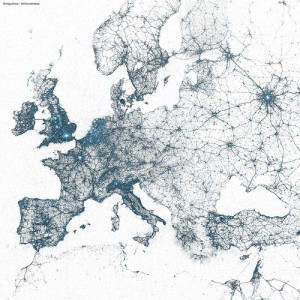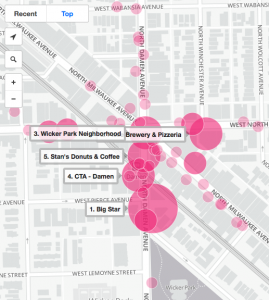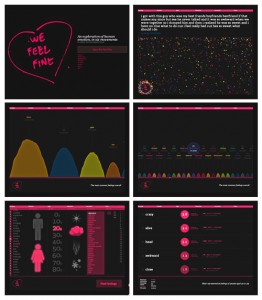During the week on ‘Smart Cities’ I quoted Townsend’s (2013) description of “urban space as an irredeemable patchwork”, 2013, p. 3. Over the module this metaphor of a patchwork can be further applied to the multiple academic disciplines that become stitched together in any critical analysis of Digital Cities, consequently leading to diverse responses each week, by the participating students.
Lee tended towards posts focused on the effects of digital technology on people, describing his own recurring theme as “the investigation of a significant opportunity for policy makers to consider how technology can improve the future lives for all citizens.” However, he generally has approached this from a position of caution over the possible outcomes and side effects of technology, commenting during the week on Smart Cities that, “The focus must not be dominated by economic goals of efficiency held ransom to capital mobility; automating proprietary and ubiquitous ‘big data’ at the expense of civil liberty; ultimately emasculating citizenship to be a consumer held hostage.” He worries that software, “erodes the element of choice on how to engage or function as a citizen.” and describes ‘Layar’ as having “[a]n intimate and almost seamless experience” as it , “seduces the user to engage and share, daring to tell all.” When considering the effects of combining sensors with software and referencing Elliot, A., & Urry, J., (2010) Lee suggests that when we start to see citizens as data there is no longer “room for affect, emotion or irrational desire for citizens are objectified as scrutinised data subjects, citizen becomes consumer identified by the narcosis of accumulating brands and experiences.” I have found Lee’s perspective to be a useful one particularly as he has sought to find a global perspective, as a number of his examples highlight the effect of technology on citizenship, particularly those at the fringes of society.
Rachael started from a more optimistic point of view, hopeful for the opportunities facing digital cities. For example she ends the post on Augmented Reality by saying, “With the hope that in the future this might give way to more democratic, diverse uses and forms of engagement.” After investigating Rezone as an example for urban gaming, she exclaims excitement at the “potential for a more democratic and collaboratively built infrastructure between citizens, city planners, and politicians.” however, this excitement is tempered by a consideration of how citizens may make use of new technologies by asking “does this actually ensure a more democratic, connected and collaborative public, which contributes to the development of smart city infrastructures that benefits the needs of all?”.
James provided a number of sensory metaphors for digital space made real in the physical manifestations of technology. Going from “the work of Michelle Teran who used Stephen Flusty’s (1994) taxonomy of “interdictory spaces” to show the ways that urban space is made defensible, often via code driven devices.”, and identifying that “Flusty’s (1994) account that makes code/spaces “jittery” spaces and in qualifying as “jittery” spaces this probably makes them quite “prickly” too.” through to prickly antennas. This continued into his ‘jittery’ augmented reality experiments with physical objects and more recently the phone app experiments he demonstrated last week. All of which have led to some really interesting examples.
In re-reading my own posts, I notice that they have generally tended towards a reflection of personal experience based around the various topics. Starting from a position of concern over “the reliance on technology and how technology is used to try add levels of control to an ultimately chaotic system.” and identifying problems through barriers to access and participation, thinking specifically about the week on Smart Citizens and the Smart Citizen example. However, I have tried to find contextual examples that interpret the critical discussion within creative and/or commercial practice to aid a balanced view.
Links to even more projects and articles can be found on my Pinterest page, http://www.pinterest.com/teneuss/
I am regularly adding pins whenever I come across something interesting, if you are a Pinterest user you could always follow me 🙂














